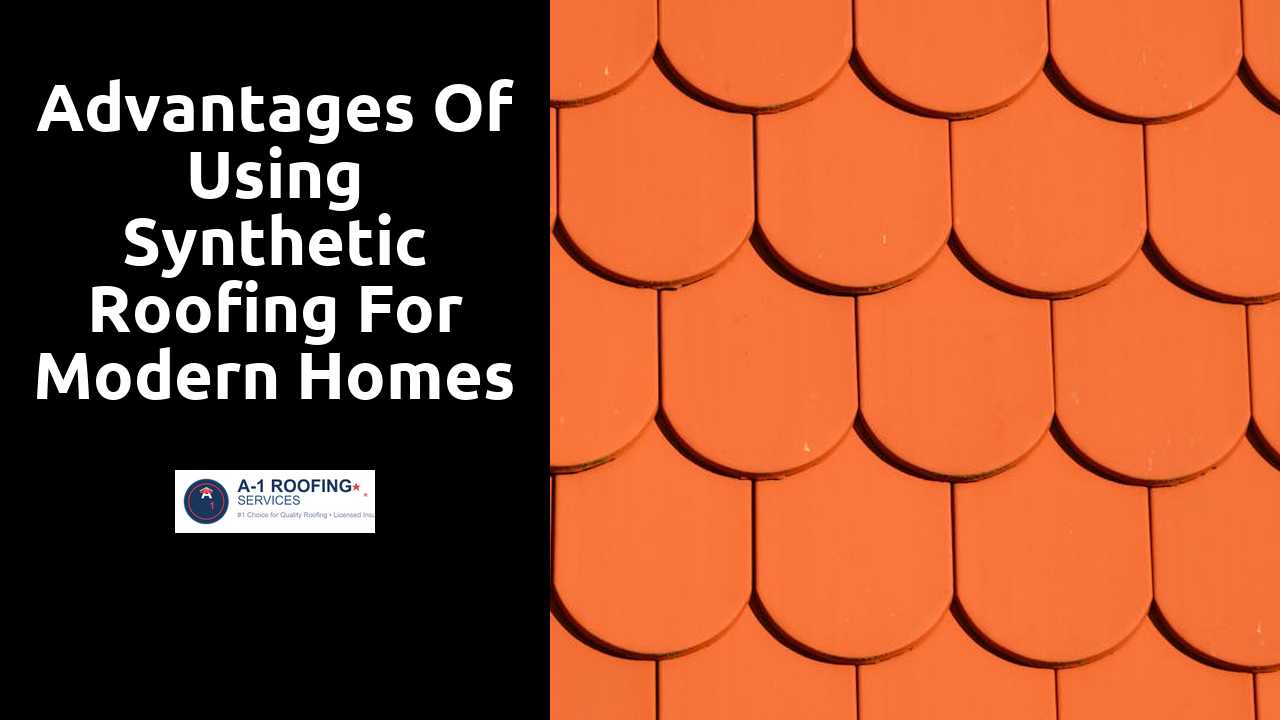
Advantages of Using Synthetic Roofing for Modern Homes
Table Of Contents
Lightweight Design
Synthetic roofing materials are known for their lightweight properties, making them an ideal choice for modern homes. Traditional roofing materials, such as clay tiles or slate, can add significant weight to a home's structure. In contrast, synthetic options can dramatically reduce the overall burden on the roof, allowing for a more flexible design and reduced strain on support beams.
This reduction in weight contributes to easier handling and installation, minimizing labor costs and project timelines. Homeowners often find that lighter roofing materials can lead to less wear and tear on the supporting framework over time. The combination of durability and lightweight design makes synthetic roofing an attractive solution for both new constructions and renovations.
This is an essential article for anyone looking to learn more about the topic.
Reduced Structural Load on Homes
Synthetic roofing materials often boast a significantly lighter weight compared to traditional options. This lightweight design contributes to a reduced overall structural load on residential buildings. Homeowners can benefit from lower foundation requirements and reduced stress on walls, beams, and support systems. A lighter roofing system can also allow for more versatile architectural designs without compromising structural integrity.
Moreover, the diminished weight can lead to substantial savings in both material and labor costs during installation. With synthetic roofing, builders may not need to reinforce existing structures, which can streamline projects and shorten construction timelines. This efficiency results in fewer resources used during installation processes, ultimately making synthetic materials a more sustainable choice for modern homeowners.
Easy Installation
Synthetic roofing materials offer a level of convenience that is hard to match. Manufacturers often design these products to be lightweight and easy to handle, which significantly streamlines the installation process. Many synthetic options come in interlocking panels or rolls, allowing for quick placement and minimal adjustments once on the roof. This ease of handling not only speeds up the work but also reduces the chances of damage during the installation.
The straightforward nature of fitting synthetic roofing also means that less specialized labor is required. Homeowners can often save on installation costs by opting for contractors who may not need extensive training in roofing techniques specific to more traditional materials. This accessibility encourages a wider range of roofing professionals to take on projects, resulting in competitive pricing and faster completion times for homeowners.
Faster Roofing Processes
The lightweight nature of synthetic roofing materials contributes significantly to quicker installation timelines. Traditional roofing systems often require more labor and preparation, which can extend overall project duration. In contrast, synthetic options streamline the process, as installers can handle and maneuver the materials with greater ease. This efficiency minimizes downtime and helps homeowners see their roofs completed faster.
Additionally, many synthetic roofing products come with interlocking features that simplify the assembly process. This design innovation allows for fewer individual components to be placed, reducing the number of steps involved in installation. As a result, roofing teams can work more effectively, leading to enhanced productivity and a smoother progression of the roofing project. Homeowners enjoy the benefits of a new roof in a shorter timeframe, enhancing their overall satisfaction with the renovation.
Fire Resistance
Synthetic roofing materials are engineered to meet high standards of fire resistance. These materials often have built-in fire retardants that help them resist ignition and limit the spread of flames. This feature not only complies with building codes but also provides peace of mind for homeowners concerned about fire hazards. The durability of synthetic roofing against flames adds an extra layer of security, making it a safer choice for modern homes.
In addition to their inherent fire-resistant properties, many synthetic roofing options undergo rigorous testing to ensure they meet or exceed safety regulations. Homeowners can feel confident knowing that their roofs contribute to overall fire safety through their proven materials. This aspect of synthetic roofing can be particularly advantageous in wildfire-prone areas, where the risk of fire damage is a serious concern. Choosing synthetic roofing not only protects the home but also enhances the resilience of the entire property.
Enhanced Safety for Homes
Synthetic roofing materials offer a significant advantage in terms of fire resistance. Many synthetic options are designed to withstand high temperatures and resist ignition from sparks or flames. This feature not only protects the home but also provides peace of mind to homeowners. Enhanced fire resistance can lead to lower insurance premiums in some cases.
Additionally, synthetic roofing is often engineered with durability in mind, making it less prone to damage from severe weather. Materials like synthetic slate or tiles can stand up to heavy rain, hail, and even high winds without cracking or losing integrity. The ability to endure such conditions reduces the risk of leaks and subsequent water damage, promoting a safer living environment.
Related Links
Installation Tips for Synthetic Roofs: A Comprehensive GuideHow to Choose the Right Synthetic Roofing Material for Your Home